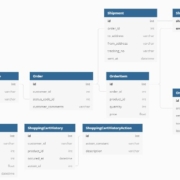In the last post of this multi-part series, we introduced methodologies and technologies for the various compliance personas to collaboratively author compliance artifacts such as regulation catalogs, baselines, profiles, system security plans, etc. These artifacts are automatically translated as code in view of supporting regulated environments enterprise-wide continuous compliance readiness processes in an automated and scalable manner. These artifacts aim to connect the regulatory and standards’ controls with the product vendors and service providers whose products are expected to adhere to those regulations and standards. The compliance as code data model we used is the NIST Open Security Controls Assessment Language (OSCAL) compliance standard framework.
Our compliance context here refers to the full spectrum of conformance from official regulatory compliance standards and laws, to internal enterprise policies and best practices for security, resiliency, and software engineering aspects.



